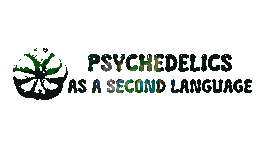Psychedelic Illustrations with Donna Torres
Comprehending psychedelics might be troublesome for many, with too much information wandering around, daily news, and picking whom to follow.
I often question myself which book I would advise someone to read when they are just starting to learn about these substances, something technical but not too hard to read, something incredibly informative yet easy to read.
With the release of Alexander “Sasha” Shulgin’s book The Nature of Drugs, a book holding the transcription of Shulgin’s lecture hall at San Francisco State University in 1987, during his classes, Shulgin approaches the subject of drugs with his comedic persona and stands as the culmination of his philosophy on drugs.
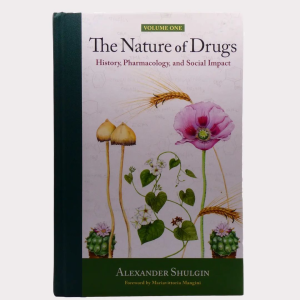
When I was first reading the book, I could get lost in my head reading and having Sasha’s voice echoing in my head from all the lectures, interviews, and videos I’ve seen online. Every chemical diagram could teleport me to witness him in his lab doing experiments to synthesize one of his over 230 psychoactive compounds.
This experience was only to be boosted by wonderful paintings of various psychedelic plants.
Such illustrations were made by Donna Torres. To learn more about her experience as a botanical artist, her experience meeting the Shulgins and Jonathan Ott, how we can benefit from psychedelics, and tips for people who wish to start their psychedelic illustration careers, I’ve contacted her for a short interview, which follows.

Donna could you tell us more about yourself and your future projects?
I was born in Canada but spent most of my life in Miami. I taught botanical illustration for nearly 20 years at Fairchild Tropical Botanic Garden in Miami and now I am teaching my last painting class at Florida International University. I’ll be officially retired from the university in August.
Currently I am working on a big exhibition of paintings and drawings for an exhibition at Miami International Airport, The Radiance of Proximity opens October 18th and will run until March 2024.
I’ll also be teaching a painting workshop at a conference being co-organized by my husband, Constantino Manuel Torres, called Utopia and Inebriation. There will be scholars from around the world and it will take place at a beautiful national park in the forests of southern Chile, Conguillío National Park,December 11 – 16. 2023.
For more info please write: co******@*****************na.cl
When did you first become interested in visionary plants?
My husband’s work in the archaeology and art history of shamanic implements brought this subject into our daily lives. I got interested in this and when I began, I was wholly supported by my college professor of painting. He thought painting visionary plants and their stories could lead to some interesting work. After college we traveled to South America for my husband’s studies, and this increased my interest.
Which plant/fungi is your favorite to illustrate and why?
I love the Brugmansia family because I find that combination of beauty and danger really interesting. The delicateness of those large flowers, the variety of colors and their use as a protective spirit intrigue me. I made a textile design full of many varieties of Brugmansia that I called Delicate Sentry. I made it into a nightgown and it feels protective. You will also find a lot of San Pedro flowers in my work. I have less experience painting fungi but it’s definitely an area of painting I would like to explore.
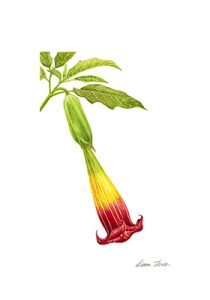
How did the love for illustrating grow in your life?
I always knew my path in life would be visual art, but my first illustrations were of archaeological snuff trays for my husband’s publications. These were done in pen and ink. Later, for my own work I thought it would be a good idea to get some training in botanical illustration.
Since my paintings and drawings were about specific plants, I thought this could help make the plants more realistic and recognizable. A friend of mine who was working at the botanical garden knew I had some training in that and suggested I apply for a teaching job there.
During my years teaching botanical illustration I also attended regular meetings of the American Society of Botanical Artists. Each year you could take classes with some of the best illustrators from around the world. My practice in watercolor painting and graphite drawing benefitted greatly with these classes.
Your illustrations have been part of both volumes of The Nature of Drugs by Sasha. When were you first introduced to their works and what was your first impression?
My (our) first introduction to the Shulgin’s work was through PIHKAL. We were, of course, blown away.
Did you ever meet the Shulgin’s? How would you describe them?
What are your fondest memories of the Shulgins?
In 1992 my husband was organizing a conference to be held in San Luis Potosí, Mexico. It would be the first Plants, Shamanism and States of Consciousness conference (it continued bi-yearly after that for a decade).
We used the opportunity to invite people whose work we had read but never met. We knew Ann had a soft spot for Mexico so we really hoped she and Sasha would agree to come.
They did and it was the beginning of a long relationship. Luckily, we also invited Jonathan Ott, another one whose work we had read but who we didn’t know in person. Consequently, he invited my husband to speak every year at the Entheobotany Palenque seminars.
We caught up there with Ann and Sasha every January for 16 days. We spent many hours with them at talks, exploring Mexico and shopping around town.
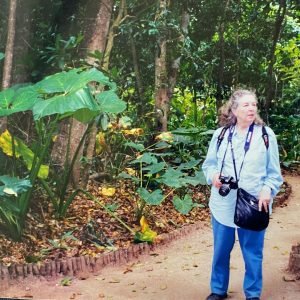
They seemed to have that special magic that ties two people together. In my work Ann was always my biggest supporter. When she and Wendy needed someone to do the plant illustrations for Sasha’s book, The Nature of Drugs, they came with a list of 26 plants. I happily said yes. What an opportunity! I painted plants that I knew and others that were entirely new to me. It was a great learning experience.
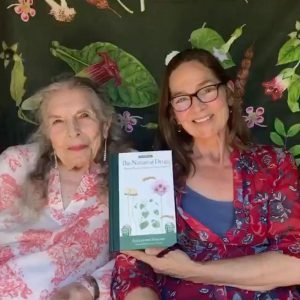
You mentioned Jonathan Ott. He has always been a more reserved and mysterious character in the psychedelic world how was it like meeting him?
It was great to meet him at the Mexico conference. He is a walking encyclopedia and an eloquent fountain of information. I also got the opportunity to have a painting on the covers of some of his early books, The Age of Entheogens & The Angel’s Dictionary in 1995 and in 1997, Pharmacophilia or the Natural Paradises.
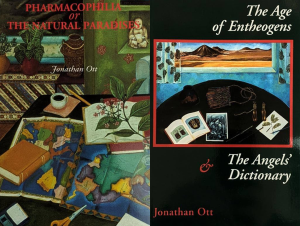
Your artwork has also been featured in Dennis Mckenna’s magnum opus, Ethnopharmacologic Search for Psychoactive Drugs, which compound interests you the most from the Ethnobotanical field?
San Pedro cactus would have to be the most significant to me. An experience I had as a young woman gave me the clarity to set goals and try to achieve them. Step by step of course.
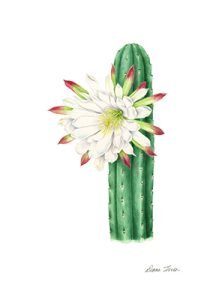
There’s a plethora of psychedelics that are currently being studied, what do psychedelics mean to you? How important are psychedelics to you personally and how do you believe we can benefit from them?
Indeed, there are a plethora of psychedelics.
For me personally they have been important, and I know they have helped many through traumas and other issues. That being said, I’m not sure they are for everyone. If you don’t have a natural affinity for the unknown, or lack an adventurous spirit, they may not be for you.
I know training is going on for medical professionals, but I think it will take a while for all that to be developed. I’m glad it will be a tool in the therapist toolbox for the future. If we had allowed studies to be done earlier perhaps many more could have been helped.
I’m particularly fascinated by how these big experiences can reduce the need for daily medications and help people to pursue meaningful lives. The more people find meaning in their life the more likely they are to contribute to creating a loving society out there. It’s so important.
Lastly, where can people buy and find your artwork, and do you have any tips for people who want to start their psychedelic illustration careers?
If you want to start your own career in this, I suggest studying art and botany. If botanical illustration classes are not available in your area there are many online classes and certificates that are doing top notch work.
The American Society of Botanical Artists have links to programs being run and if you are in Europe or the UK there is the Society of Botanical Artists which also have programs. The ASBA has an annual meeting in different cities of the US each year and the classes offered are great. I owe so much to them in fine tuning my craft. I came through the art route, an MFA in drawing and painting. To begin, find a plant you like and study it well. Then you’ll be on your way.
To find my illustrations and textiles go to donnatorres.com, for a wider overview of my work check out my artist website: toseeclearly.com. If you are interested in original work contact me directly, do*********@*ac.com.
My handle at Facebook and IG is @toseeclearly and my shop IG is @visionary_garden. As I mentioned, I will be teaching a painting workshop at the Utopia and Inebriation conference at Conguillío National Park in the forests of southern Chile, December 11 – 16, 2023.
For more info please write: co******@*****************na.cl The website is being made but isn’t ready for the public yet.
